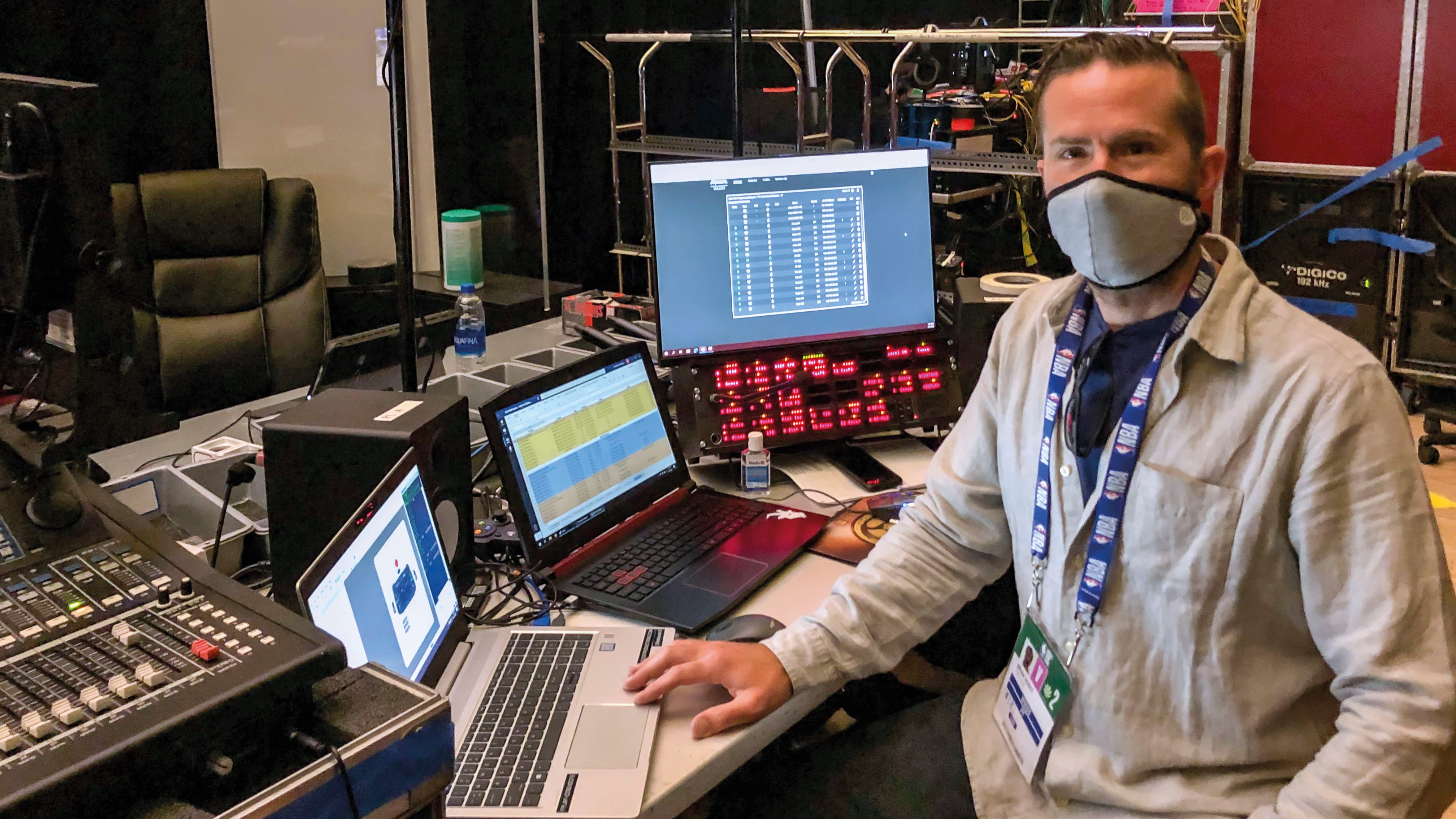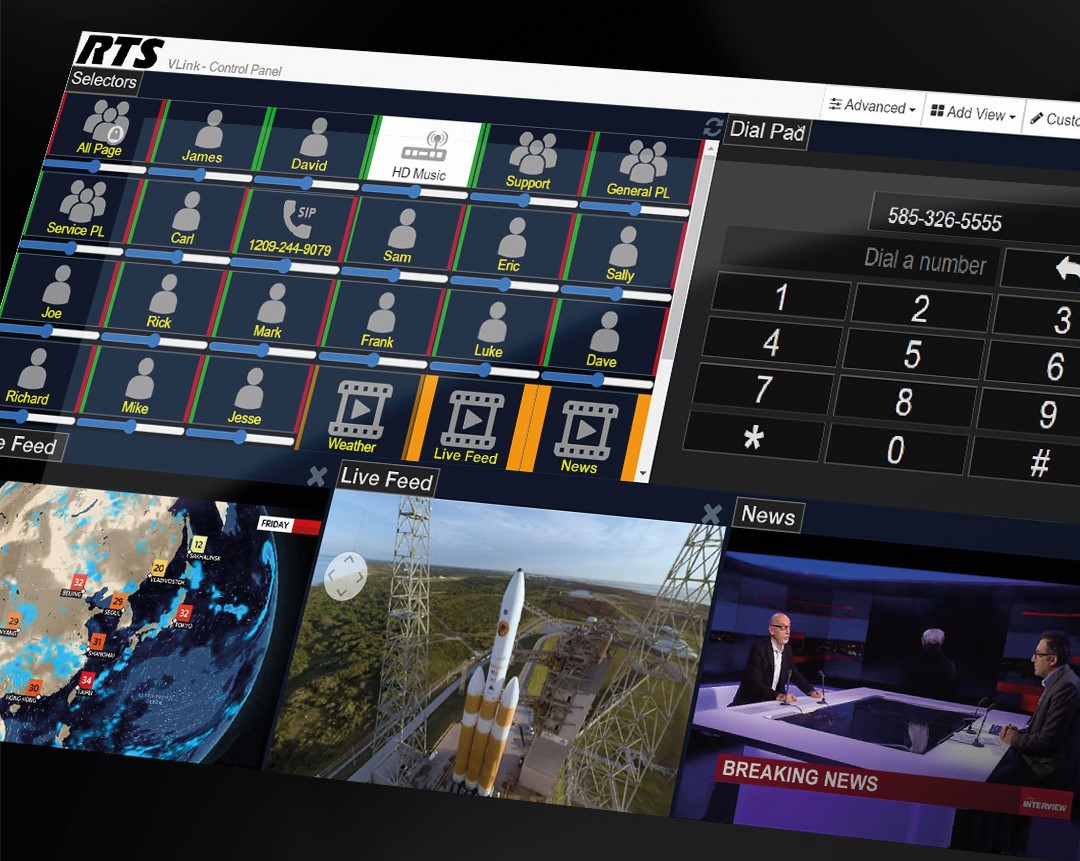Intercoms Become More Flexible for Remote Production
New features promote user friendliness, cloud connectivity

LONDON—Developers of professional intercom systems have made much of the fact that while modern technology has helped enable remote operations and working from home, much of that technology was already available prior to the pandemic.
Social distancing has forced broadcasters to accelerate their adoption of these technologies but with no indication as to how long the new ways of working will be in place, systems have been adapted and upgraded to offer features that were not immediately necessary a year ago.
Some companies have even developed brand new products during this time, although these are not all comms-oriented. Riedel Communications responded to the need for social distancing with its DisTag distance monitor. This alerts the person wearing or carrying it if someone gets too close through haptic (a two-stage vibration alarm), visual (a two-stage LED signal) or acoustic (a two-stage sound signal) methods.
In addition to DisTag, Riedel has “made a lot of improvements” to its core comms products according to Intercom Product Manager Felix Kolls. Some of these concern the user interface more than connectivity and are targeting non-technical, creative staff working from home. The 1200 Series SmartPanel now offers touchscreens that support icons and an eight-character main label plus 16-character sub-label per key, so that each function can be identified and explained.
VoIP (voice over IP) has come into its own and is being used in conjunction with Virtual Intercom Panels for working from home, Kolls said. “This allows a regular computer or mobile device to function as an intercom end-point,” he explains. “The integration of panels or audio into an intercom system via long-distance connections is key for today’s distributed productions.”
Catering to nontechnical users was also the impetus behind the design of Pliant Technologies’ new MicroCom full-duplex range, which allows multiple people to be on a system without the need for a technician onsite setting it up, configuring it or operating, according to Gary Rosen, vice president of global sales for Pliant.
In general, Rosen adds, having more wireless intercoms “can be extremely helpful,” not just through connecting people without physical constraints but also in maintaining social distancing. “Before COVID restrictions, you could walk up to someone and whisper to them,” he says. “Intercom enables you to stay 30-feet away and still whisper to them.”
Get the TV Tech Newsletter
The professional video industry's #1 source for news, trends and product and tech information. Sign up below.
THEY’RE ALSO MULTITASKERS
AEQ has combined several products from its different technology areas—intercom, communications and networking—to expand coverage over different platforms and connectivity formats. In addition to intercom systems, which are designed with KROMA Telecom, AEQ also develops codecs to provide connections over either ISDN, standard telephone lines (PSTN) or IP. It also produces call-in/conferencing management technology and from this range the Systel-IP platform is being integrated with the Conexia intercom to provide more options for broadcasters.
AEQ Sales Director Gustavo Robles explains that integration can be through SIP (session initiation protocol) or the Phoenix codec. “We can also offer Dante, RAVENNA and AES67 for audio over IP,” he said. “Also included are SMPTE ST 2110 interfaces, while our remote links can run over standard Ethernet or VPNs [virtual private networks] with intercom panels in different locations.”
John Kowalski, director of broadcast and network sales at Clear-Com, agrees that SIP enhances connectivity, particularly for field reporters or for those working from home. “SIP and VoIP are technologies we were supporting in 2019 and which increased in business applications, including being used to come in and out of intercoms, during 2020,” he says. “IP connectivity to mobile devices as well between studios is something else we are seeing.”
Kowalski added that the need to improve connectivity for remote production existed prior to 2020 and was addressed by ClearCom through its LQ Series of AoIP interfaces. These have been adopted for working from home and also work with the Agent-IC mobile app, which allows iOS and Android devices such as smartphones and tablets to become mobile user panels.
IP IS CRUCIAL
IP functionality has been able to adapt to the needs of working from home natively, said Martin Dyster, vice president of business development at Telos Alliance, but it needs to be more user friendly for less technically inclined staff.

“We realized at the outset of the pandemic that the configuration was not going to be simple for all users, so we made some fundamental changes that made the Infinity IP intercom as close to ‘plug and play’ as possible,” he said.
A more general trend brought about by the pandemic, Dyster notes, is the acceleration of TV studios migrating to cloud-based workflows. This is, in turn, pushing intercoms towards having some of its core functions located in third-party facilities.
“This new way of working in TV has taught us that the need for scalable, reliable and secure off-premises products and services will continue to grow, with broadcasters becoming increasingly adept at these workflows,” he says. “We have accelerated our own transition to cloud-based products based on this demand and also adapted some of our hardware technology to facilitate work-from-home or remote use.”
RTS has provided new features for its VLink software-based intercom that include cloud service redundancy, recording, encryption, video capture/streaming, enhanced control panels and standalone capabilities.

“We have also improved our long-distance studio interconnection technology—RTS Trunking—which is now able to support volume control,” says Angelo Piga, global product manager for RTS Partyline. “This is a real game-changer because it allows users to adjust listen volumes for remote point-to-point and partyline assignments as if they were local assignments.”
Away from technology, hygiene and cleanliness continue to be serious considerations in controlling the spread of the virus. Piga agrees that sharing equipment, particularly headsets and microphones, is still a concern for customers.
“We have helped by giving instructions on how to keep things like that clean,” he says. “We’ve also seen a significant increase in headsets and microphone orders.” Rosen adds that sales of replacement foam mic covers and ear pads have increased, while noting that the days of having a “bin of headsets” and “just grabbing one are behind us.”
Whether workflows and working practices will go back to anything approaching how they were pre-pandemic is still uncertain. As John Kowalski of Clear-Com says, any changes going through 2021 and into 2022 are likely to be “more subtle than abrupt.” The only constant will be the continuing need for communications and connectivity.
